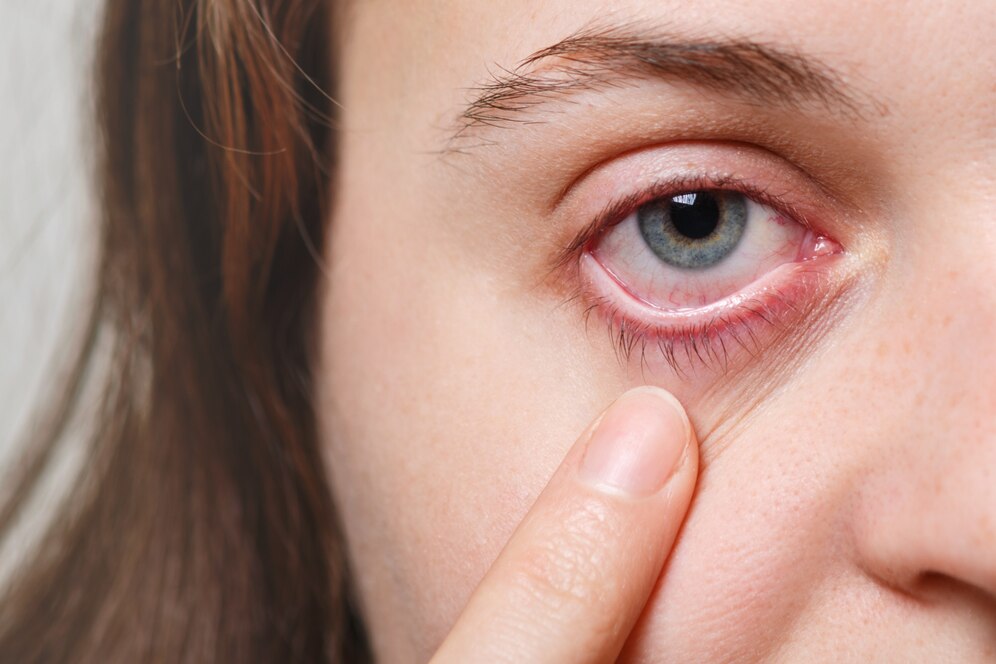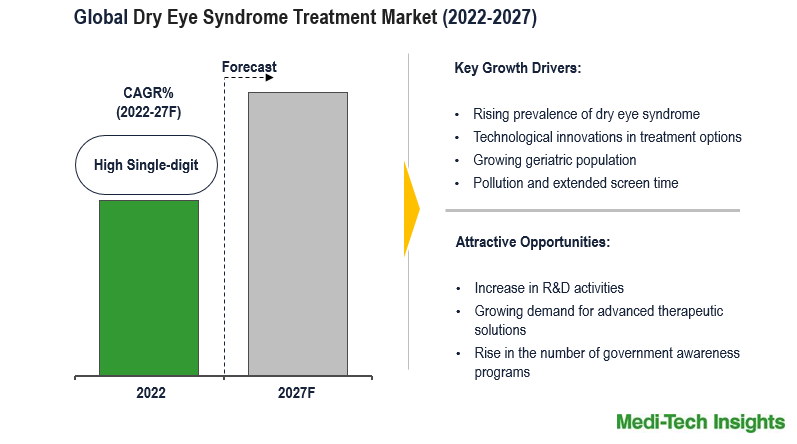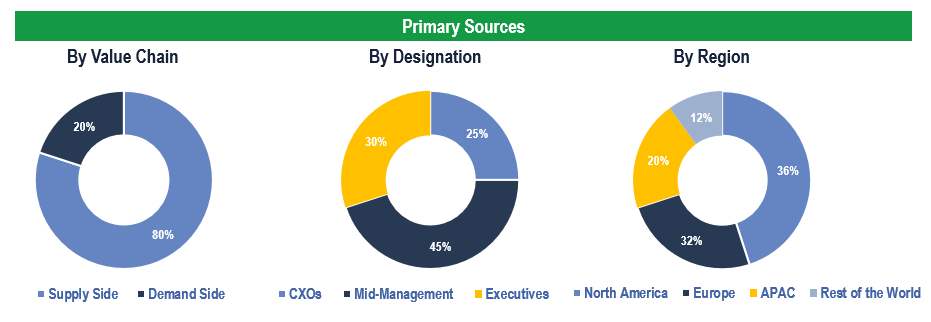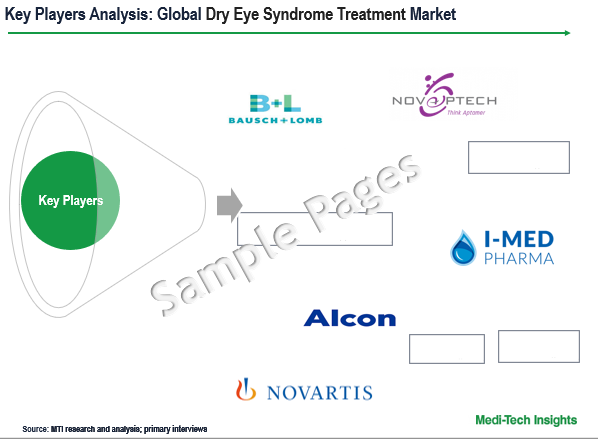
Dry Eye Syndrome Treatment Market: Population Health and Industry Growth Analysis for Forecast to 2027

The Global Dry Eye Syndrome Treatment Market is expected to witness a high single-digit growth rate by 2027. The growth of the market is driven by the rising prevalence of dry eye syndrome, technological innovations in treatment options, a growing geriatric population, lifestyle changes, rise in R&D activities, and increasing awareness among the population about the condition. To learn more about the research, fill out a quick inquiry for a sample report.
Dry eye syndrome, or dry eye disease, is a common condition characterized by a chronic lack of sufficient lubrication and moisture on the eye's surface. This leads to discomfort, irritation, and inflammation of the eyes. The tear film, which consists of water, oil, and mucus, plays a crucial role in maintaining the health of the eyes by providing moisture, reducing the risk of infection, and creating a smooth surface for clear vision.
In individuals with dry eye syndrome, the eyes may not produce enough tears or the tears may have an abnormal composition, leading to an unstable tear film. This instability can result in various symptoms, including dryness in the eyes, burning or stinging sensation, redness, excessive tearing (as a reflex response to dryness), and blurred vision.
Several factors can contribute to the development of dry eye syndrome, including aging, hormonal changes, certain medical conditions, medications, environmental factors, and prolonged screen time. The diagnosis of dry eye syndrome often involves assessing the underlying causes and employing various treatment strategies, such as artificial tears, lifestyle modifications, and, in severe cases, prescription medications or procedures.
Diverse Factors Propelling Growth in the Dry Eye Syndrome Treatment Market
The growth drivers of the dry eye syndrome treatment market encompass various factors. Firstly, the increasing prevalence of dry eye syndrome is a significant catalyst, driven by factors such as age, environmental conditions, and lifestyle choices. Advances in diagnostic technologies play a crucial role in facilitating early detection and timely management of the condition. The rise in the aging population is linked to a higher incidence of dry eye syndrome due to age-related risk factors. Environmental factors, including pollution and extended screen time, contribute to an elevated risk, thereby increasing the demand for effective treatments. Moreover, technological innovations in treatment options, such as novel drugs and medical devices, propel market growth by providing more efficient and less invasive solutions. The market benefits from a growing awareness among healthcare professionals and the general population regarding the symptoms, risk factors, and available treatments for dry eye syndrome. For instance,
- In February 2022, I-MED Pharma USA launched its dry eye diagnostics and treatment solutions in the United States through a strategic partnership with DryEye Rescue in Boca Raton, Florida. The collaboration aims to raise awareness among U.S. optometrists about I-MED Pharma USA's innovative dry eye product portfolio
Lifestyle changes, marked by increased screen usage due to digitization post-COVID and alterations in dietary habits, further contribute to the escalating prevalence of the condition. Ongoing research and development efforts aimed at discovering new therapeutic solutions for dry eye syndrome drive innovation and further propel the market growth. For instance,
- In June 2023, Novaliq declared FDA approval for VEVYE (Cyclosporine Ophthalmic Solution) 0.1%, marking the first and sole cyclosporine solution designed for alleviating the signs and symptoms of dry eye disease, showcasing efficacy within a 4-week timeframe
Collaborations between pharmaceutical companies, research institutions, and healthcare organizations are pivotal in advancing research and developing novel treatment options. Additionally, government initiatives and funding support for research projects related to dry eye syndrome play a crucial role in fostering innovation and overall market development.

Fill out the "Quick Inquiry Form" to request a sample copy
Innovations in Focus: Transformative Advances in Dry Eye Syndrome Therapies
The dry eye syndrome treatment market, a significant segment within the healthcare and pharmaceutical industries, is dedicated to addressing the treatment, and management of a prevalent ocular condition characterized by inadequate tear production or poor tear quality. The market's primary objective is to deliver effective therapeutic solutions, alleviate symptoms, enhance tear production, and preserve ocular surface health for those affected by this syndrome.
Several key factors influence the growth of the dry eye syndrome treatment market. With an increasing number of individuals experiencing dry eye symptoms, the necessity for advanced treatments and management approaches becomes imperative. Advancements in medical research and ophthalmic science have yielded innovative therapies for dry eye syndrome. These include new drug formulations, ocular lubricants, and tear stimulants, offering improved efficacy, longer-lasting relief, and heightened patient comfort. For instance,
- In May 2023, Bausch + Lomb Corporation and Novaliq GmbH disclosed that the U.S. Food and Drug Administration (FDA) has granted approval for MIEBOTM (perfluorohexyloctane ophthalmic solution; previously NOV03) to address the signs and symptoms of dry eye disease (DED). MIEBO stands as the initial and sole FDA-approved treatment for DED specifically targeting tear evaporation
- In April 2023, Sun Pharmaceutical Industries Limited declared the launch of a new ophthalmology treatment, CEQUA, in India. This treatment is designed for patients experiencing Dry Eye Disease (DED) with inflammation, a prevalent condition. CEQUA represents the first dry eye treatment in India utilizing nano micellar (NCELL) technology for delivery
- In January 2022, Alcon unveiled the European release of its latest inclusion in the innovative dry eye product lineup – Systane Complete Preservative-Free Lubricant Eye Drops, now presented in a convenient multi-dose bottle
Technological progress has transformed the identification and management of dry eye syndrome, introducing advancements like tear osmolarity measurement, corneal topography, and sophisticated imaging methods to improve diagnostic precision. Additionally, the introduction of innovative therapeutic strategies, such as tear substitutes, anti-inflammatory agents, and tools for managing meibomian gland dysfunction, has broadened the array of treatment choices accessible to individuals affected by the syndrome.
Dry Eye Syndrome Treatment Market Key Constraints/Challenges
The challenges faced by the global dry eye syndrome treatment market are multifaceted, including issues such as the absence of standardized diagnostic criteria, which hinders consistent evaluation and treatment approaches. Additionally, limited awareness and underdiagnosis, coupled with cost constraints and reimbursement challenges, further compound the complexities within the market, aggravated by the continuously evolving regulatory landscape.
North America Accounts for the Largest Share of the Global Market
A comprehensive regional market analysis for the dry eye syndrome treatment market indicates variations in prevalence, treatment approaches, and market dynamics across different geographic areas. The dry eye syndrome treatment market in North America is characterized by robust growth, with the region holding a significant market share. The prevalence of dry eye syndrome in the region is notably high, attributed to factors such as an aging population, widespread use of digital devices, and environmental conditions. The region's advanced healthcare infrastructure and strong focus on technological innovations contribute to the development of new diagnostic tools and treatment options. Stringent regulatory standards and a well-established reimbursement framework further drive market growth.
The Asia Pacific region witnesses a growing prevalence of dry eye syndrome, attributed to factors such as pollution, changing lifestyles, and an aging population. Advancements in healthcare infrastructure and increasing awareness about eye health drive market expansion. However, variations in regulatory landscapes across countries impact the adoption of treatment to a certain extent. The market in this region is poised for lucrative growth opportunities.
Dry Eye Syndrome Treatment Market Competitive Landscape
Top companies such as Novartis AG, Johnson & Johnson Vision (J&J), Santen Pharmaceutical Co., Ltd., Shire (Takeda Pharmaceutical Company Limited), Alcon (Novartis), Otsuka Pharmaceutical Co., Ltd., Allergan (AbbVie Inc.), Bausch Health Companies Inc., I-Med Pharma Inc and Novaliq GmbH held a high market position.
Organic and Inorganic Growth Strategies Adopted by Players to Establish Their Foothold in the Market
Players operating in this market are adopting both organic and inorganic growth strategies such as collaborations, and acquisitions to garner market share. For instance,
- In September 2023, Bausch + Lomb Corporation acquired XIIDRA (lifitegrast ophthalmic solution) from Novartis, a non-steroid eye drop designed for the targeted treatment of the signs and symptoms of dry eye disease (DED), with a particular emphasis on inflammation linked to dry eye, along with specific other ophthalmology assets
- In June 2023, Senju Pharmaceutical Co., Ltd., and Novaliq GmbH, entered into a license agreement for the development, manufacturing, and commercialization rights of NOV03 (perfluorohexyloctane ophthalmic solution) in Japan. NOV03 is recognized as the first and only prescription treatment exclusively addressing signs and symptoms of dry eye disease by directly targeting tear evaporation
The market is expected to grow due to a rising aging population, extended screen time, growing demand for new treatments, technological advancements, and aggressive organic and inorganic growth strategies followed by the players.
Dry Eye Syndrome Treatment Market Scope
|
Report Metric |
Details |
|
Definition |
Dry eye syndrome, or dry eye disease, is a chronic condition characterized by insufficient lubrication and moisture on the eye's surface, leading to discomfort, irritation, and inflammation. |
|
Symptoms |
Dryness, burning or stinging sensation, redness, excessive tearing, blurred vision. |
|
Diagnosis Methods |
Assessment of tear film stability, measuring tear osmolarity, corneal topography, advanced imaging methods. |
|
Contributing Factors |
Aging, hormonal changes, medical conditions, medications, environmental factors, prolonged screen time. |
|
Treatment Strategies |
Artificial tears, lifestyle modifications, prescription medications, procedures. |
|
Market Growth Drivers |
Increasing prevalence, advances in diagnostic technologies, aging population, environmental factors, technological innovations, awareness among healthcare professionals and the general population. |
|
Recent Innovations |
Launch of dry eye diagnostics and treatment solutions, FDA approval for novel drugs (e.g., VEVYE, MIEBO, CEQUA), advancements in diagnostic tools and treatment options. |
|
Challenges and Constraints |
Lack of standardized diagnostic criteria, limited awareness, underdiagnosis, cost constraints, reimbursement challenges, evolving regulatory landscape. |
|
Regional Market Analysis |
North America: High prevalence, advanced healthcare infrastructure, strong focus on technological innovations. Asia Pacific: Growing prevalence, pollution, changing lifestyles, aging population. |
|
Key Market Players |
Novartis AG, Johnson & Johnson Vision, Santen Pharmaceutical, Shire (Takeda), Alcon (Novartis), Otsuka Pharmaceutical, Allergan (AbbVie), Bausch Health Companies, I-Med Pharma, Novaliq GmbH. |
Dry Eye Syndrome Treatment Market Key Strategic Questions Addressed
- What is the market size & forecast for the Global Dry Eye Syndrome Treatment Market?
- What are the historical, present, and forecasted market shares and growth rates of various segments and sub-segments of the Global Dry Eye Syndrome Treatment Market?
- How has COVID-19 impacted the Global Dry Eye Syndrome Treatment Market?
- What are the major growth drivers, restraints/challenges impacting the market?
- What are the opportunities prevailing in the market?
- What is the investment landscape?
- Which region has the highest share in the global market? Which region is expected to witness the highest growth rate in the next 5 years?
- Who are the major players operating in the market? What is the competitive positioning of key players?
- Who are the new players entering the market?
- What are the key strategies adopted by players?
- Research Methodology
- Secondary Research
- Primary Research
- Market Estimation
- Market Forecasting
- Executive Summary
- Market Overview
-
- Market Dynamics
- Drivers
- Restraints
- Key Market Trends
- Industry Speaks
- Market Dynamics
- Key Revenue Pockets
- Global Dry Eye Syndrome Treatment Market - Size & Forecast (2019-2027), By Disease Type
- Evaporative Dry Eye Syndrome
- Aqueous Deficient Dry Eye Syndrome
- Global Dry Eye Syndrome Treatment Market - Size & Forecast (2019-2027), By Dosage Form
- Eye Drops
- Ointments
- Capsules & Tablets
- Others
- Global Dry Eye Syndrome Treatment Market - Size & Forecast (2019-2027), By Distribution Channel
- Hospital Pharmacy
- Retail Pharmacy
- Online Pharmacy
- Global Dry Eye Syndrome Treatment Market - Size & Forecast (2019-2027), By Region
- North America (U.S. & Canada)
- Europe (UK, Germany, France, Italy, Spain, Rest of Europe)
- Asia Pacific (China, India, Japan, Rest of Asia Pacific)
- Rest of the World (Latin America, Middle East & Africa)
- Competitive Landscape
- Key Players and their Competitive Positioning
- Competitive Positioning of Key Players (2022)
- Offerings Assessment, By Player
- Key Strategies Assessment, By Player (2021-2023)
- New Product Launches
- Partnerships, Agreements, & Collaborations
- Mergers & Acquisitions
- Geographic Expansion
- Key Players and their Competitive Positioning
- Key Companies Scanned (Indicative List)
- Novartis AG
- Alcon (Novartis)
- Allergan (AbbVie Inc.)
- Bausch Health Companies Inc.
- I-Med Pharma Inc
- Johnson & Johnson Vision (J&J)
- Santen Pharmaceutical Co., Ltd.
- Shire (Takeda Pharmaceutical Company Limited)
- Otsuka Pharmaceutical Co., Ltd.
- Novaliq GmbH
- Other Prominent Players
The study has been compiled based on extensive primary and secondary research.
Secondary Research (Indicative List)

Primary Research
To validate research findings (market size & forecasts, market segmentation, market dynamics, competitive landscape, key industry trends, etc.), extensive primary interviews were conducted with both supply and demand-side stakeholders.
Supply Side Stakeholders:
- Senior Management Level: CEOs, Presidents, Vice-Presidents, Directors, Chief Technology Officers, Chief Commercial Officers
- Mid-Management Level: Product Managers, Sales Managers, Brand Managers, Business Development Managers, Consultants
Demand Side Stakeholders
Breakdown of Primary Interviews

Market Size Estimation
Both ‘Top-Down and Bottom-Up Approaches’ were used to derive market size estimates and forecasts.
Data Triangulation
Research findings derived through secondary sources & internal analysis were validated with Primary Interviews, Internal Knowledge Repository, and Company Sales Data.



